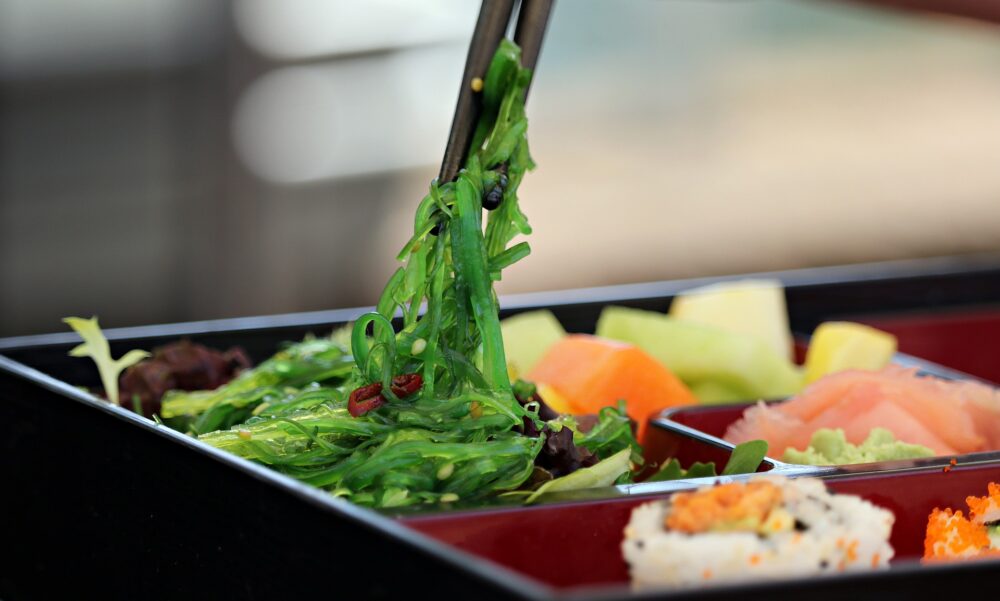While cooking dinner the other night, I found myself engaging in tomato discourse with my roommates. I was trying to unpack why they didn’t like the fruit on its own yet liked it in a sauce or salad. What we boiled it down to was the tomatoes’ rheological properties—also known as mouthfeel, and even more commonly known as texture.
Rheology is the study of deformation and flow of matter. When applied to food, rheology concerns how food moves and feels during the eating process. From the way it breaks down during mastication—chewing—to how it is digested, food rheology plays a big part in how a consumer perceives what they are eating.
Crispy, creamy, and chewy are the most coveted food consistencies, according to food scientist Malcolm Bourne.
Think about the bright crunch of a freshly steamed green bean compared to a dull, limp bean from a can. Crispy, creamy, and chewy are the most coveted food consistencies, according to food scientist Malcolm Bourne. That crisp bean is preferable because it requires chewing, something that needs to be done with strong, healthy teeth, as opposed to a soft vegetable that needs little work to be consumed. Bourne writes that humans have a “deeply ingrained need to chew,” which is one explanation for why fresh produce is preferred over something from a can. But the texture of that fruit or vegetable can also be the difference between something that is evocative of the farmer’s market or one’s elementary school cafeteria. Whether this is a positive or negative perception depends highly on personal preference, as well as cultural context.
“I don’t like the texture” is a common response to why people don’t enjoy a particular food. The actual taste of food is not as much of a factor as characteristics like “it’s too chewy,” “it’s too slimy” or “it’s too dry.” A food can have a pleasant flavor, yet its mouthfeel is enough to drive a prospective consumer away. Marinara sauce is just fine, but a solo cherry tomato can evoke some unsavory feelings.
Tomatoes are not alone in facing this adversity. Octopus is a food that causes hesitation when served alone and given room for its rubbery consistency to shine, but when battered and fried up in a crispy, salty coating, it is warmly received in a slightly disguised state. In something like calamari, the combination of familiar textures—crunchy and grainy—helps bridge that gap to the unfamiliar.
The words used to describe the various mouthfeels of food are also often inadequate. Take “chewy,” for example. Al dente pasta is chewy, with just enough resistance to bring some textural interest to a plate of penne vodka. Yet it’s a different sort of chewy than boba, the black pearls found in bubble tea, which have a bouncy and smooth bite to them. “Q” or “QQ” is a Taiwanese term that effectively describes this texture, which can be found in many other East Asian foods such as mochi and tteokbokki.
According to food scientist Ole Mouritsen, there are over 400 Japanese words that can be applied to the texture of food, while English only has about 80.
The English language fails to capture the spectrum of food textures, which may be reflective of the highly processed, soy- and corn-heavy food products that dominate American freezer aisles and fast food restaurants. According to food scientist Ole Mouritsen, there are over 400 Japanese words that can be applied to the texture of food, while English only has about 80. This is not to say that Americans are unable to talk about specific textures, but the lack of specificity in language makes it easy to lump, say, all “chewy” foods into one category that overlooks nuances within this category.
This conglomeration of descriptors makes it even easier for one to have a negative reaction to an unexpected mouthfeel. If the standard for “chewy” in American cuisine is a caramel candy or the soft center of a chocolate chip cookie, the kind of chewy that makes a fish cake so delightful may not be received as easily in an American palate than in a Japanese one. Yet this is why open-mindedness is key to appreciating all foods, even when its texture is one that may be surprising—briefly uncomfortable, even.
So while flavor is important, texture just might be the real spice of life. To live in a world where food is textureless would be to live in a world where baby food was the only option—mushy, soft cuisine that requires no teeth. In the same way that there is a joy to the process of making a meal from start to finish, part of the joy of eating is the process of how you experience that food, from the first bite to the very last one.
DOI: 10.1080/15528014.2019.1638119
DOI: 10.1007/978-0-387-70930-7_1
DOI: 10.1016/j.cocis.2010.07.003
